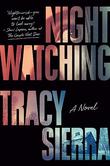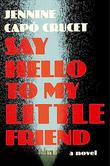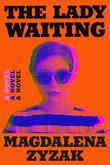
by Matthew Desmond ‧ RELEASE DATE: March 1, 2016
This stunning, remarkable book—a scholar’s 21st-century How the Other Half Lives—demands a wide audience.
Awards & Accolades
Our Verdict

GET IT
Google Rating
Kirkus Reviews'
Best Books Of 2016
Kirkus Prize
finalist
New York Times Bestseller
National Book Critics Circle Winner
Pulitzer Prize Winner
A groundbreaking work on the central role of housing in the lives of the poor.
Based on two years (2008-2009) spent embedded with eight poor families in Milwaukee, Desmond (Sociology and Social Science/Harvard Univ.; On the Fireline: Living and Dying with Wildland Firefighters, 2007, etc.) delivers a gripping, novelistic narrative exploring the ceaseless cycle of “making rent, delaying eviction, or finding another place to live when homeless” as experienced by adults and children, both black and white, surviving in trailer parks and ghettos. “We have failed to fully appreciate how deeply housing is implicated in the creation of poverty,” writes the author. Once rare, eviction is now commonplace for millions of Americans each year, most often as a result of insufficient government support, rising rent and utility costs, and stagnant incomes. Having gained unusual access to these families, Desmond immerses us in the lives of Sherrena Tarver, a teacher-turned-landlord who rents inner-city units to the black poor; Tobin Charney, who nets more than $400,000 yearly on 131 poorly maintained trailers rented (at $550 a month) to poor whites; and disparate tenants who struggle to make rent for cramped, decrepit units plagued by poor plumbing, lack of heat, and code violations. The latter include Crystal, 18, raised in more than two dozen foster homes, who moved in with three garbage bags of clothes, and Arleen, a single mother, who contacted more than 80 apartment owners in her search for a new home. Their frantic experiences—they spend an astonishing 70 to 80 percent of their incomes on rent—make for harrowing reading, interspersed with moving moments revealing their resilience and humanity. “All this suffering is shameful and unnecessary,” writes Desmond, who bolsters his stories with important new survey findings. He argues that universal housing vouchers and publicly funded legal services for the evicted (90 percent lack attorneys in housing courts) would help alleviate this growing, often overlooked housing crisis.
This stunning, remarkable book—a scholar’s 21st-century How the Other Half Lives—demands a wide audience.Pub Date: March 1, 2016
ISBN: 978-0-553-44743-9
Page Count: 432
Publisher: Crown
Review Posted Online: Dec. 8, 2015
Kirkus Reviews Issue: Dec. 15, 2015
Share your opinion of this book
More by Matthew Desmond
BOOK REVIEW
More About This Book
SEEN & HEARD
SEEN & HEARD

by Paul Kalanithi ‧ RELEASE DATE: Jan. 19, 2016
A moving meditation on mortality by a gifted writer whose dual perspectives of physician and patient provide a singular...
Awards & Accolades
Likes

18
Our Verdict

GET IT
Google Rating
Kirkus Reviews'
Best Books Of 2016
New York Times Bestseller
Pulitzer Prize Finalist
A neurosurgeon with a passion for literature tragically finds his perfect subject after his diagnosis of terminal lung cancer.
Writing isn’t brain surgery, but it’s rare when someone adept at the latter is also so accomplished at the former. Searching for meaning and purpose in his life, Kalanithi pursued a doctorate in literature and had felt certain that he wouldn’t enter the field of medicine, in which his father and other members of his family excelled. “But I couldn’t let go of the question,” he writes, after realizing that his goals “didn’t quite fit in an English department.” “Where did biology, morality, literature and philosophy intersect?” So he decided to set aside his doctoral dissertation and belatedly prepare for medical school, which “would allow me a chance to find answers that are not in books, to find a different sort of sublime, to forge relationships with the suffering, and to keep following the question of what makes human life meaningful, even in the face of death and decay.” The author’s empathy undoubtedly made him an exceptional doctor, and the precision of his prose—as well as the moral purpose underscoring it—suggests that he could have written a good book on any subject he chose. Part of what makes this book so essential is the fact that it was written under a death sentence following the diagnosis that upended his life, just as he was preparing to end his residency and attract offers at the top of his profession. Kalanithi learned he might have 10 years to live or perhaps five. Should he return to neurosurgery (he could and did), or should he write (he also did)? Should he and his wife have a baby? They did, eight months before he died, which was less than two years after the original diagnosis. “The fact of death is unsettling,” he understates. “Yet there is no other way to live.”
A moving meditation on mortality by a gifted writer whose dual perspectives of physician and patient provide a singular clarity.Pub Date: Jan. 19, 2016
ISBN: 978-0-8129-8840-6
Page Count: 248
Publisher: Random House
Review Posted Online: Sept. 29, 2015
Kirkus Reviews Issue: Oct. 15, 2015
Share your opinion of this book

by Abhijit V. Banerjee & Esther Duflo ‧ RELEASE DATE: Nov. 12, 2019
Occasionally wonky but overall a good case for how the dismal science can make the world less—well, dismal.
“Quality of life means more than just consumption”: Two MIT economists urge that a smarter, more politically aware economics be brought to bear on social issues.
It’s no secret, write Banerjee and Duflo (co-authors: Poor Economics: A Radical Rethinking of the Way To Fight Global Poverty, 2011), that “we seem to have fallen on hard times.” Immigration, trade, inequality, and taxation problems present themselves daily, and they seem to be intractable. Economics can be put to use in figuring out these big-issue questions. Data can be adduced, for example, to answer the question of whether immigration tends to suppress wages. The answer: “There is no evidence low-skilled migration to rich countries drives wage and employment down for the natives.” In fact, it opens up opportunities for those natives by freeing them to look for better work. The problem becomes thornier when it comes to the matter of free trade; as the authors observe, “left-behind people live in left-behind places,” which explains why regional poverty descended on Appalachia when so many manufacturing jobs left for China in the age of globalism, leaving behind not just left-behind people but also people ripe for exploitation by nationalist politicians. The authors add, interestingly, that the same thing occurred in parts of Germany, Spain, and Norway that fell victim to the “China shock.” In what they call a “slightly technical aside,” they build a case for addressing trade issues not with trade wars but with consumption taxes: “It makes no sense to ask agricultural workers to lose their jobs just so steelworkers can keep theirs, which is what tariffs accomplish.” Policymakers might want to consider such counsel, especially when it is coupled with the observation that free trade benefits workers in poor countries but punishes workers in rich ones.
Occasionally wonky but overall a good case for how the dismal science can make the world less—well, dismal.Pub Date: Nov. 12, 2019
ISBN: 978-1-61039-950-0
Page Count: 432
Publisher: PublicAffairs
Review Posted Online: Aug. 28, 2019
Kirkus Reviews Issue: Sept. 15, 2019
Share your opinion of this book
More About This Book
SEEN & HEARD
© Copyright 2024 Kirkus Media LLC. All Rights Reserved.
Hey there, book lover.
We’re glad you found a book that interests you!
We can’t wait for you to join Kirkus!
It’s free and takes less than 10 seconds!
Already have an account? Log in.
OR
Trouble signing in? Retrieve credentials.
Welcome Back!
OR
Trouble signing in? Retrieve credentials.
Don’t fret. We’ll find you.





